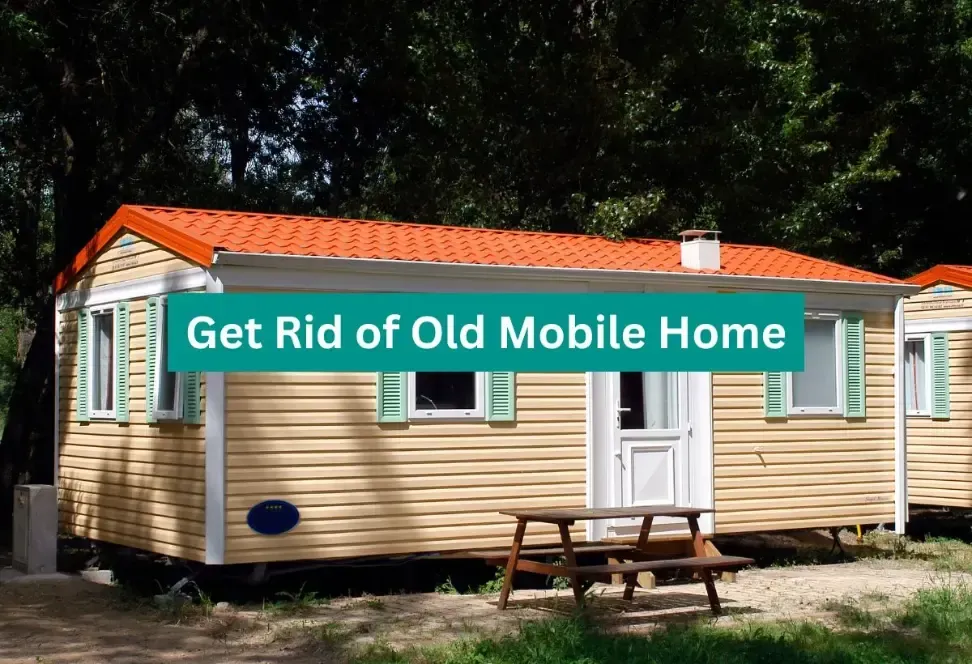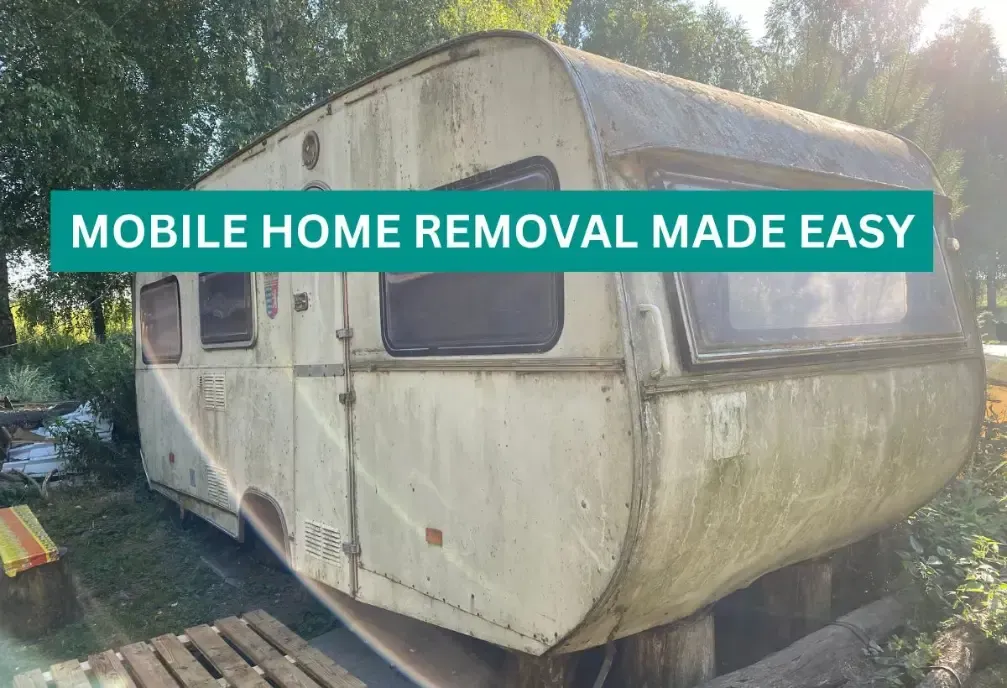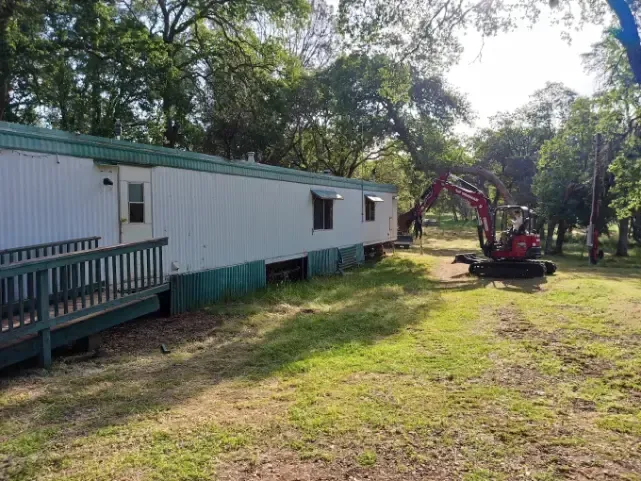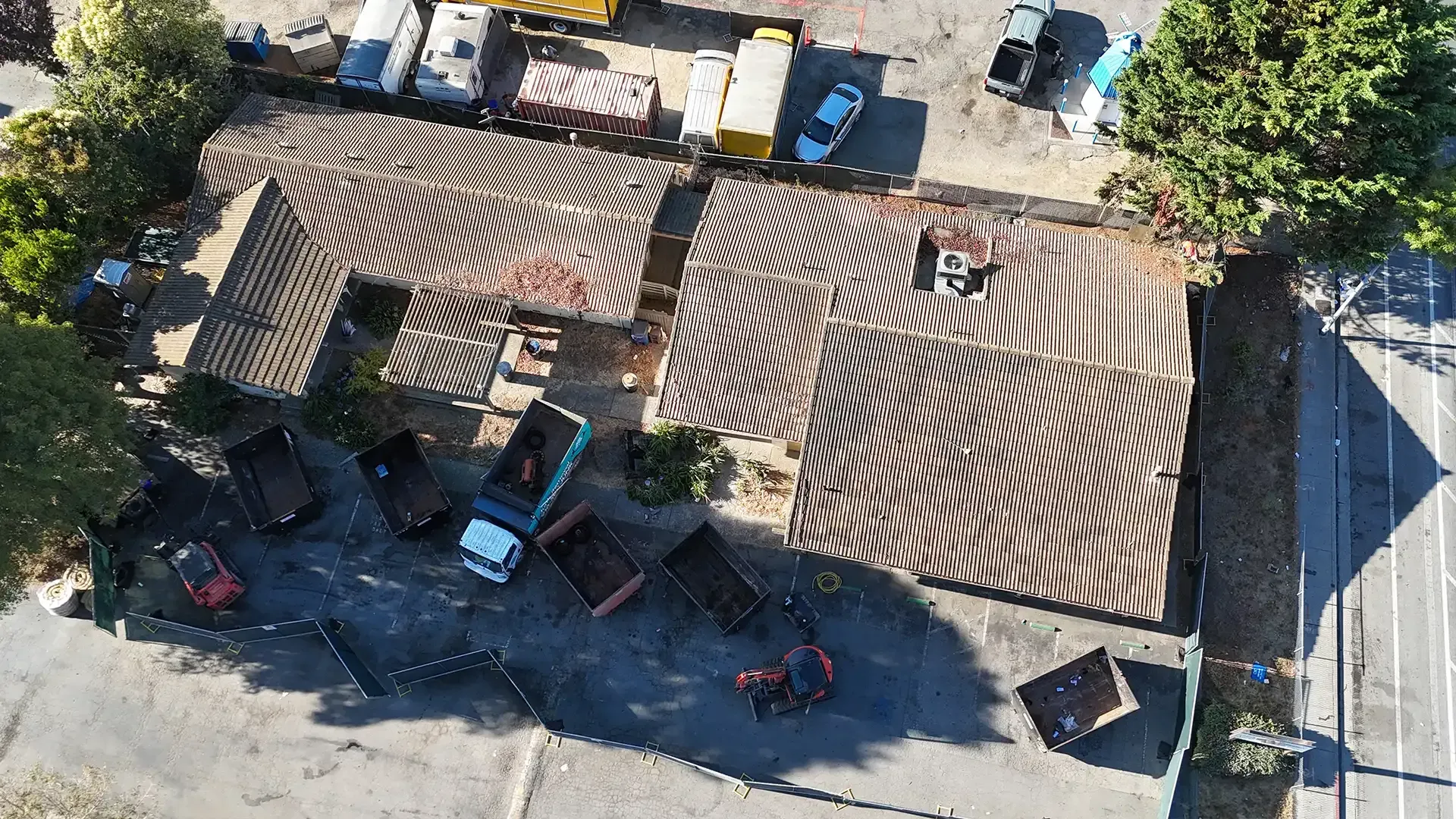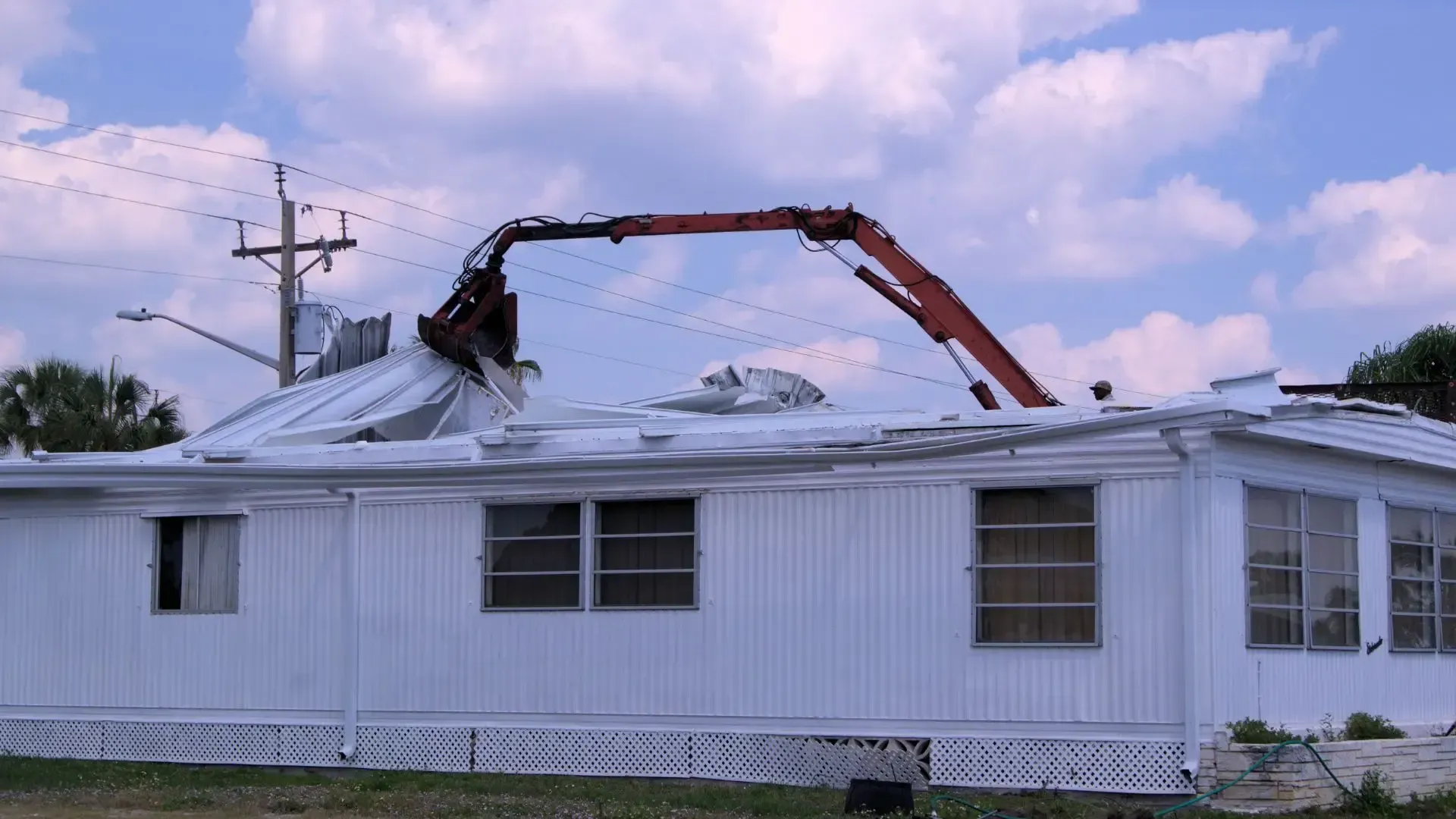How Much Does It Cost to Remove a Mobile Home - Sacramento
So, you’ve got a mobile home that’s overstayed its welcome. Maybe it's taking up valuable space, falling apart, or just standing in the way of a new project. Whatever the reason, getting rid of a mobile home in Northern California isn’t as simple as hauling it off and calling it a day. It’s a process—one that involves permits, heavy machinery, and a whole lot of debris. And, of course, it comes with a price tag.
Understanding the cost of demolition upfront can save you from surprises down the road. Mobile home removal isn’t just about knocking something down—it’s about doing it right. You’ve got local rules to follow, local disposal fees to factor in, and labor costs that vary based on how complex the job is. If asbestos or other hazardous materials are in the mix, well, that’s a different ball game (and an expensive one at that).
Knowing what you’re up against before you start makes all the difference. Sacramento has specific regulations when it comes to demolition services, and skipping steps could lead to costly fines or delays. But don’t worry—once we break down the whole process and look at what influences the price, you’ll be in a much better position to plan.
So before you grab a sledgehammer and go full DIY on that outdated mobile home, let’s dive into the costs. Spoiler alert: It’s not just about the size of the mobile home.
The body content of your post goes here. To edit this text, click on it and delete this default text and start typing your own or paste your own from a different source.
What Impacts the Cost of Mobile Home Removal? Let’s Break It Down
The cost of removing a mobile home in Sacramento isn’t one-size-fits-all. Every detail—from its size to the land it’s sitting on—plays a role in how much you’ll end up paying. Before planning your demolition project, take a look at the key factors that could either keep costs low or keep them climbing.
Bigger Isn’t Always Better: Size and Type of Mobile Home
A single-wide manufactured home is going to be a lot easier (and cheaper) to remove than a double-wide. Less material, fewer structural challenges, and a faster teardown process. But if you’re dealing with a whole mobile home that’s a double-wide or even a triple-wide, expect the costs to rise. More square footage means more debris, more time, and often heavier equipment to get the job done.
Well-Kept or Falling Apart? Condition Matters
A mobile home in decent shape comes apart in a predictable way, making the demolition teams' job easier. But if it’s been battered by time, weather, or poor maintenance, things get tricky. We’re talking about weakened frames, sagging roofs, and brittle materials that crumble instead of cooperating. The worse the condition of your mobile home, the more careful (and time-consuming) the removal process becomes.
The place where it is located can help or hurt the job. Location and easy access matter.
Tearing down a mobile home in an open lot is easy. There is a lot of room to work. But if the home is in a small suburban area or far back in the countryside, it can be hard. Narrow driveways can get in the way. Also, it may be tough to disconnect services for the home. It could take longer because the ground might be rough. You may need large trucks and special tools to get into these places. This can make the removal costs higher.
What’s Underneath Counts: Foundation Type
Not all mobile homes sit on the same base. A pier and beam system is often easier to take out. But if the home is fixed to a concrete slab, it will need more work. Removing concrete takes longer, needs more workers, and costs more to throw away. It might even need digging services to level the area after, which is something else to think about.
Hazards Can Happen Where You Least Look: Handling Dangerous Materials
Older mobile homes—especially ones made before the late ‘80s—can have many surprises, and not nice ones. They may have asbestos insulation, lead-based paint, and old wiring. This can change a simple demolition into a cleanup task with many rules. Following good practices means handling and disposing of these materials safely, resulting in higher costs. You can’t cut corners. There are government rules and strict local environmental laws to protect the community.
The Price of Following the Rules: Permits and Local Laws
Speaking of laws in Sacramento, let’s discuss permits. You can't start taking down a mobile home without the right approvals. The required permits depend on the size and location of your project. The application process may take some time. If you need environmental impact assessments or inspections, that could delay your work even more. The fees for the permits are not too high, but delays and extra steps could raise your costs for demolition services.
Mobile Home Removal: Which Route Works Best for You?
There’s more than one way to say goodbye to an old mobile home. You can tear it down, take it apart piece by piece, haul it off to a new location, or even pass it on to someone else. Each method has its perks—and its headaches. The right choice depends on your goals, budget, and how much patience you have. Let’s break it down.
Demolition: Quick, Loud, and Final
Sometimes, the fastest way to move forward is to bring in the heavy machinery and wipe the slate clean. Demolition is exactly what it sounds like—a swift, calculated teardown using excavators, bulldozers, and a whole lot of muscle. The structure comes down, the debris gets sorted, and what’s left is hauled away. It’s fast, straightforward, and doesn’t require waiting around for a buyer or dealing with relocation logistics.
But speed comes at a cost. Dumping fees for all that debris add up, especially if you’re dealing with concrete foundations or hazardous materials like asbestos. Plus, it’s not the most eco-friendly option. Salvageable materials like wood, metal, and fixtures often end up in landfills instead of being repurposed. If time is of the essence, demolition is hard to beat. If sustainability matters, there might be better options.
Deconstruction: A Careful and Thoughtful Choice
Think of deconstruction like a careful way to take a building down. Instead of breaking everything, workers gently take the home apart. They save anything that can be used again, like doors, windows, cabinets, and the frame. The goal is to keep as much out of the landfill as they can. They want to use materials that still have value.
On the positive side, taking apart a building can save money on disposal fees. It can also help you get tax benefits if you donate the materials you save. However, this method takes more time. Labor costs can be higher. You will also need to plan for how to store or move reusable items. If you want to reduce waste and give old materials a new life, deconstruction is a good choice. But if you need the house gone quickly, this is not the fastest way.
Relocation: Moving Instead of Removing
Not every mobile home has to go to a landfill. If it’s in good shape, strong, and can still be moved, you might think about relocating it. Instead of tearing it down, you could load it onto a trailer and take it to a new spot. Sounds easy, right? But it's not that simple.
Moving a mobile home is not easy. First, it must be really mobile since many old models do not meet current transport rules. Second, you need permits, a special moving company, and a place that allows mobile homes. Plus, we cannot overlook the costs. The fees for permits, transport, and setting up at the new spot can add up quickly.
But when it works, it really works. If you feel connected to the home or want to use it in a new way, this method can save it and give it a fresh start. Just be sure the costs make sense before you choose this way.
Selling or Donating: Allowing Others to Take It Over
If your mobile home still works well, why not let someone else have it? Selling or giving it away can be great for both of you. You make space, and someone can get a low-cost home. Groups that help families with less money may take mobile homes. Also, private buyers might want to buy it from you, especially if it is in good shape.
This approach needs patience. You have to find a buyer or charity that will take the home as it is. It may also need repairs to make it livable again. This means you will face some upfront costs. But if you’re not in a hurry and like the idea of passing it on, selling or donating is worth looking into.
Cost Breakdown
When dealing with mobile home demolition, many things affect the total cost. Labor, equipment, disposal methods, and permits all play a role. Each part matters for the final price. Let's look at the main areas that can change your budget.
Labor Costs: The Workforce Behind the Work
The cost of labor can change based on how complex the project is. In Sacramento, labor fees usually fall between $11,000 and $23,200. Full demolitions of houses with basements are often at the higher end of this range. The size of the home, the presence of hazardous materials, and the conditions at the site affect labor costs. If you need interior demolition services or if getting to the site is hard, you will likely see higher costs.
Equipment and Machinery: The Tools for the Job
Taking down a part of a house or a mobile home isn’t just about having people—it needs strong machines. Depending on the job, the workers may use big machines like excavators, bulldozers, or dumpsters to take care of the waste. The more special the tools, the more they cost. Also, when demolition services need to be more careful—like when taking out parts from the inside—they may use smaller tools and do careful work by hand. This can also change the price.
Transportation and Disposal: Clearing the Site
Once the structure is taken down, the last bits of debris need to be moved away. The cost to get rid of debris depends on things like weight, type, and local fees. Moving debris to landfills or recycling places is not just about getting big trucks. It also means paying fees and following local rules. Friendly demolition services often try to recycle. This can help lower costs and keep waste from landfills.
Permit and Inspection Fees: Following the Rules
Sacramento needs the right permits for any house or commercial demolition project. The fees can change depending on where the project is and how big it is. Inspections before and after the demolition ensure that the rules and building codes are followed. These costs are important to prevent fines and delays. A clear outline of permit requirements is key to staying on schedule.
Site Cleanup and Restoration: Getting Ready for the Next Step
A project is not finished just because the building is gone. Site preparation means leveling the ground, clearing the land, and sometimes planting grass or getting ready for new construction. It does not matter if it’s a small backyard or a bigger lot. A good cleanup makes sure things are safe and helps move smoothly into the next step of development.
Ways to Potentially Reduce Costs
Demolition doesn't have to cost a lot of money. Here are some ways to stay on budget while making sure the removal is safe and complete.
1. Recycling and Saving: Turning Waste into Money
Not everything in a mobile home has to end up in a dump. Many parts, like metal siding, wooden beams, and appliances, can be saved and sold again. Some workers give discounts for jobs where they can use materials again, which makes the demolition cheaper. Recycling aluminum, copper, or steel can help lower costs and support a better way to take care of the planet.
2. DIY Preparation Steps: Cutting Costs Where You Can
Homeowners who want to save money on labor can do some work themselves. This may mean taking out personal items, removing non-structural parts, or disconnecting utilities with help from a professional. But some tasks, like dealing with asbestos, should be done by experts in mobile home removal. This keeps everyone safe and helps avoid any legal problems.
3. Comparing Contractor Quotes: Finding the Best Deal
Not all demolition services cost the same. Getting several free quotes helps you compare prices and see what is included. Some estimates might look lower but leave out important costs like permits or cleanup. Asking for a clear estimate helps you avoid surprise fees and ensures nothing is left behind.
Choosing the Right Contractor in Sacramento
Choosing the right team of mobile home demolition experts is very important, just like keeping your budget in mind. A good contractor makes the demolition go smoothly and easily. A poor choice can lead to delays, extra costs, and a lot of frustration. Here’s what you should consider when you decide.
1. Experience and Expertise Matter
Tearing down a building is not just about strength. It needs skill, planning, and careful work. A good demolition contractor can manage surprises, like delays in permits or working with dangerous materials. Before you hire someone, ask about their experience with mobile homes. Can they show you their finished work? Do they have people who can give good reviews? The more projects they’ve done, the better they will be at avoiding expensive errors.
2. Licensing, Insurance, and Protection
Never hire a contractor without the right papers. A license shows they follow local rules. Insurance helps you if something goes wrong. Choose contractors who have general liability insurance and workers’ compensation. If they don’t, you might pay for damages or injuries. Good protection helps you feel safe and stops surprise costs.
3. Reputation and Reviews
A contractor’s reputation grows over time. Look at reviews on Google, Yelp, and the Better Business Bureau to see what previous clients say. Were they on time? Did they clean up well? Did they stick to the budget? A solid record of happy customers shows they care about their work. If their feedback is steady, it's a good sign your project will run smoothly.
Making the Right Choice for Mobile Home Removal
Taking down a mobile home isn’t as simple as swinging a sledgehammer. Costs depend on size, condition, location, and foundation type. Onsite assessment, labor, permits, careful debris management, and cleanup all add to the bottom line. It’s important to consider these factors before starting the job.
A little planning can make a big difference. Salvaging materials, handling small tasks yourself, and getting multiple quotes can help reduce costs. Finding an experienced, well-reviewed contractor ensures the job gets done right, without unnecessary delays or surprise expenses.
In the end, mobile home removal is an investment in the value of the home and the property’s future. Whether you’re making room for a new build or just getting rid of an old structure, working with the right professionals makes the process smoother. Take your time, do your research, and your project will be in good hands.
Need to remove a mobile home in Sacramento?
We make mobile home demolition easy, safe, and stress-free. Our team handles everything—from permits to debris removal—so you don’t have to. Get a free quote today and start your project with confidence. Call us now or book an onsite assessment to get started!
FAQs
-
How much does it cost to demolish a mobile home in Sacramento?
The average cost to remove a mobile home depends on several factors, including its size, location, and any necessary disconnection of utilities. We provide a detailed estimate after an onsite assessment, so you know exactly what to expect. Our team works to keep demolition costs as low as possible while maintaining quality service.
-
Do you offer other demolition services besides mobile home removal?
Yes, we provide a wide range of demolition services, including house demolition, residential demolition services, and removing inground pools. Whether you need to take down an entire structure or just part of the home, our expert demolition team is ready to handle the job with precision.
-
What happens during the mobile home demolition process?
Our demolition process starts with an assessment of the site, followed by permit approvals and utility disconnections. Once the home is ready, we carefully dismantle it, paying close attention to debris disposal and site cleanup. We handle every critical safety step, so you don’t have to worry about compliance or unexpected issues.
-
Do you remove all debris after demolition?
Yes, our mobile home removal experts ensure that every job site is completely cleared. We handle debris disposal, leaving no mess behind. Whether it’s large sections of the structure or the last pieces of debris, we make sure the site is clean and ready for the next phase of your project.
-
Is there a more delicate approach to mobile home removal if I want to salvage materials?
Absolutely. Instead of full demolition, we can take a more delicate approach by selectively deconstructing part of a building to recover valuable materials. If you're interested in salvaging parts like metal, wood, or fixtures, we can adjust our process to meet your needs.
-
Do you serve areas outside Sacramento?
Yes, we serve surrounding regions, including El Dorado counties and beyond. If you’re unsure whether we cover your location, reach out to Demo Patrol for a detailed explanation of our comprehensive protection and services in your area.


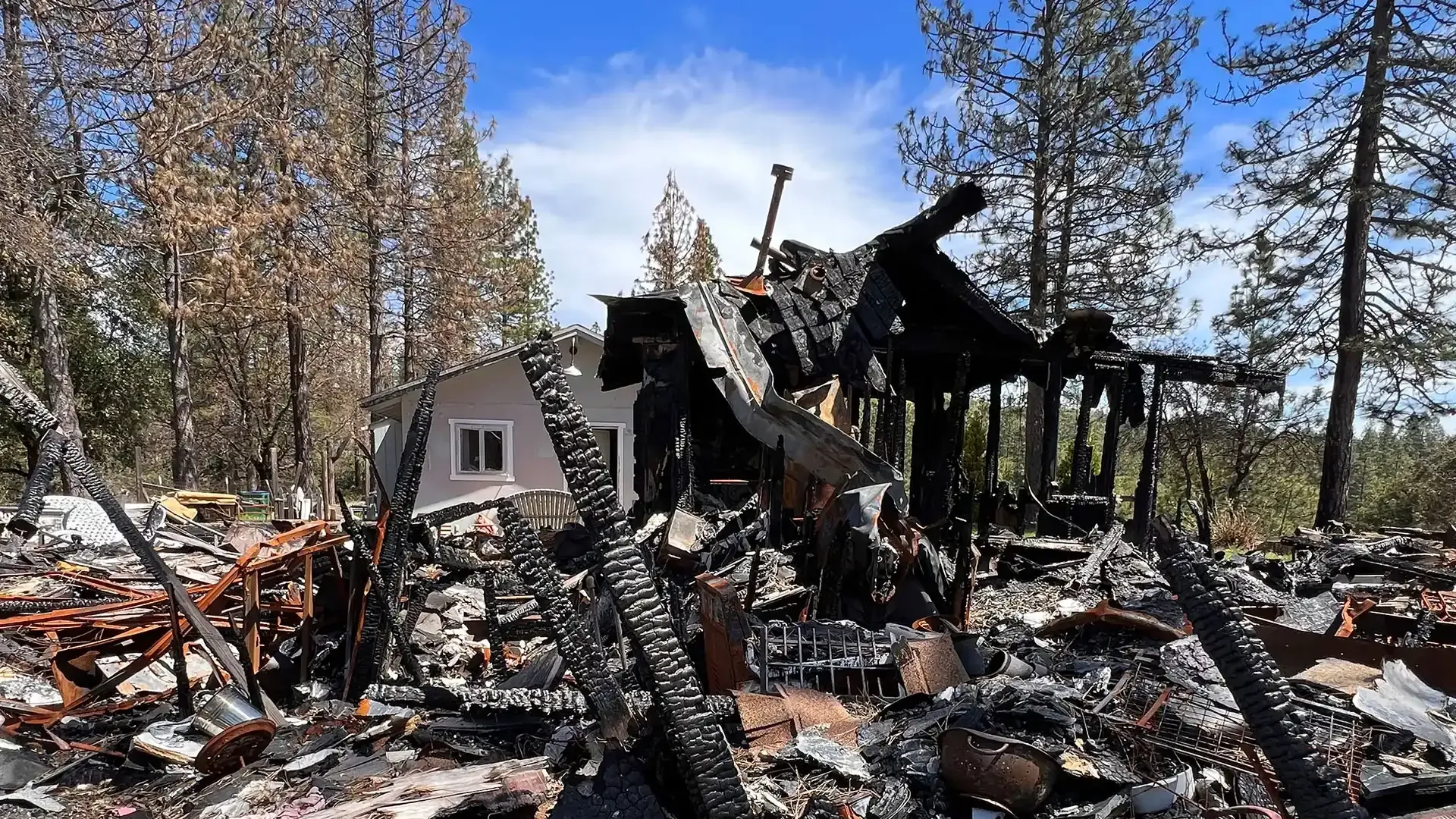
CONTACT INFO
Phone Number: 916 409 6879
OSHA-10 Certified Contractor
Licensed For Demolition In California
All Rights Reserved | Demo Patrol | Website Designed by Blue Crocus Solutions | Privacy Policy | TOS

